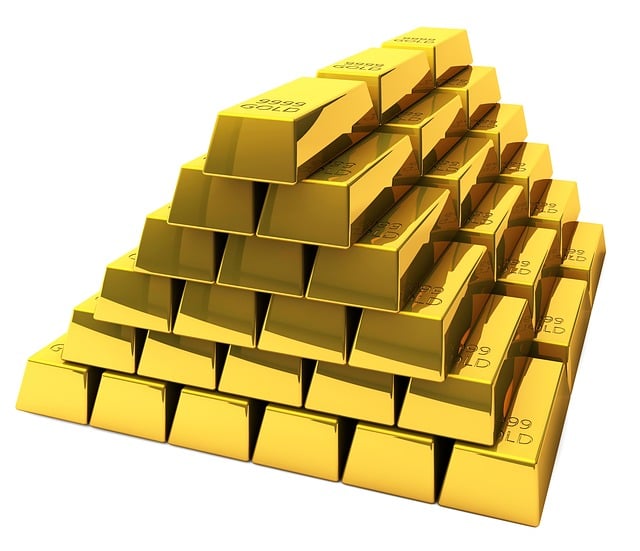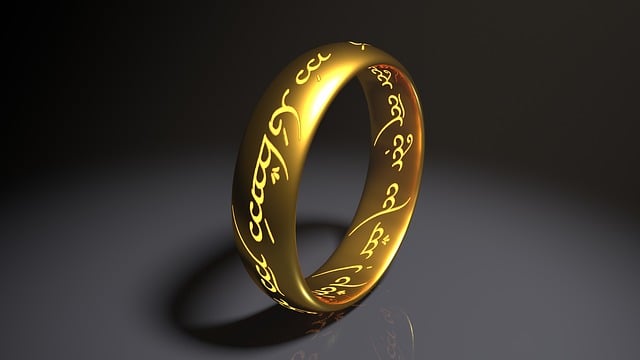Precious metals IRAs allow investors to include physical gold, silver, platinum, and palladium as part of their retirement portfolio diversification. These IRAs come in various forms and must comply with IRS purity standards for the precious metals involved. Gold and silver are the most commonly held due to their roles as safe-haven assets; gold for its stability and rarity, and silver for its growth potential albeit with higher volatility. Platinum and palladium can offer distinct market behaviors and investment profiles. Investors should choose a custodial service that aligns with their broader retirement strategy and financial objectives, considering the unique benefits and risks of each metal. Precious metals IRA specialists provide guidance on compliance, transaction support, and establishing self-directed IRAs that include these assets. They ensure secure storage in approved depositories and facilitate the rollover process for existing funds. It's important to select a reputable provider with certifications and positive customer feedback when setting up a precious metals IRA, given the need for transparent fee structures and adherence to IRS regulations. The tax treatment of these investments differs from other IRA assets and requires careful consideration and professional advice to optimize retirement savings' growth within the legal framework.
Discover the enduring allure of precious metals as a hedge against economic uncertainty. In this comprehensive guide, we delve into the intricacies of incorporating gold, silver, platinum, and palladium into your retirement strategy through a Precious Metals IRA. From understanding the diverse investment options to evaluating top-tier service providers, learn how these metals can safeguard your financial future. We’ll navigate the legal landscape and tax considerations unique to precious metals IRAs, ensuring you’re well-equipped to diversify your retirement portfolio with tangible assets that have stood the test of time.
- Understanding Precious Metals IRA Investment Options
- The Role of Specialist Companies in Precious Metals IRAs
- How to Integrate Physical Gold, Silver, Platinum, and Palladium into Your Retirement Plan
- Evaluating Reputable Precious Metals IRA Providers
- Legal Considerations and Tax Implications of Precious Metals IRAs
Understanding Precious Metals IRA Investment Options

Precious metals IRAs offer investors a diverse and stable investment option within their retirement portfolios. These accounts allow for the inclusion of physical gold, silver, platinum, and palladium as part of an individual’s retirement savings strategy. Investors have several options when it comes to precious metals IRAs, including traditional, Roth, SEP, and SIMPLE IRAs that are allocated to precious metals. The choice of metals for investment can encompass a range of products, from coins and bars to rare collectibles, provided they meet the Internal Revenue Service (IRS) standards for purity and eligibility.
When considering a precious metals IRA, it’s crucial to understand the types of metals eligible for holding in an IRA. Gold and silver are perennially popular choices due to their historical status as safe-haven assets. Gold is often favored for its long-term value retention and scarcity, while silver offers potential for higher growth rates but comes with inherent price volatility. Platinum and palladium are less commonly held but can offer diversification benefits within a precious metals portfolio. Each type of metal has its own market dynamics and investment characteristics, which investors should carefully consider in the context of their overall retirement strategy. Investors should also be aware of the different custodial services available, as these entities specialize in the storage, management, and transactional aspects of precious metals IRAs. Understanding the nuances of each option is key to making an informed decision that aligns with one’s investment goals and risk tolerance.
The Role of Specialist Companies in Precious Metals IRAs

Specialist companies in precious metals IRAs play a pivotal role in guiding investors through the complexities of integrating physical precious metals into their retirement portfolios. These firms are well-versed in the intricacies of IRS regulations governing such investments, ensuring that each transaction aligns with the permissible guidelines for IRA-approved assets. They provide a comprehensive suite of services, from educating investors on the benefits and risks associated with holding physical gold, silver, platinum, and palladium within a tax-advantaged retirement account to facilitating the actual acquisition, storage, and custodial needs of these assets.
The expertise of these companies is instrumental in navigating the selection process for metal purity and types that qualify for IRA investment. They assist with the logistics of transferring or rolling over existing retirement funds into a self-directed IRA capable of holding precious metals. Furthermore, they ensure that investors have access to secure storage options compliant with IRS standards, which may include segregated, allocated accounts at approved depositories. This level of specialized service is crucial for safeguarding the integrity and legal compliance of an investor’s precious metals IRA, thereby providing peace of mind and confidence in their long-term investment strategy.
How to Integrate Physical Gold, Silver, Platinum, and Palladium into Your Retirement Plan

Integrating physical precious metals like gold, silver, platinum, and palladium into your retirement plan can be a strategic move to diversify your investment portfolio and hedge against inflation and market volatility. To incorporate these assets, you must establish or have an existing self-directed Individual Retirement Account (IRA) that allows for alternative investments, including physical precious metals. The process begins with selecting a reputable IRA custodian that specializes in these types of investments. These custodians are equipped to handle the transactional nuances and compliance requirements associated with holding physical metals within a tax-advantaged retirement account.
Once you have chosen a qualified custodian, you can fund your IRA through rollovers from existing retirement accounts or by making contributions if you meet the income requirements and have not reached your IRA’s contribution limits for the year. After funding, you may purchase eligible precious metals. The Internal Revenue Service (IRS) stipulates specific purity standards for coins and bars to be held in an IRA; therefore, it is crucial to acquire these metals from reputable dealers who understand the IRS rules. Your custodian will then arrange for the delivery of the metals to their approved depositories on your behalf. Regularly reviewing and rebalancing your holdings as part of your overall investment strategy will help ensure that your retirement plan remains aligned with your financial goals and risk tolerance.
Evaluating Reputable Precious Metals IRA Providers

When exploring the option to invest in precious metals through an Individual Retirement Account (IRA), the selection of a reputable provider is paramount. Due diligence is essential as one evaluates the credentials and track record of precious metals IRA companies. Reputable firms typically possess a range of certifications, such as those from the Better Business Bureau (BBB) or the Certified IRA Services Providers program. They also have transparent fee structures and provide detailed information on how they handle the storage and custody of the physical metals. Furthermore, their historical performance in facilitating similar transactions and client testimonials can offer insight into their reliability and customer service quality. It’s advisable to review the company’s history with the Internal Revenue Service (IRS) to ensure compliance with all regulations governing IRAs. Additionally, investors should consider the types of precious metals offered and whether they align with investment goals. Some companies may specialize in certain metals or offer a more diverse selection, which can affect the suitability for an investor’s portfolio. By conducting thorough research and examining each aspect of a provider’s operation, investors can make an informed decision, selecting a precious metals IRA company that aligns with their investment objectives and risk tolerance.
Legal Considerations and Tax Implications of Precious Metals IRAs

When considering the incorporation of precious metals into an Individual Retirement Account (IRA), legal frameworks and tax implications are critical factors to understand. The Internal Revenue Service (IRS) has established specific guidelines for what constitutes acceptable assets within a self-directed IRA, particularly those holding physical precious metals. These assets must meet the purity standards set forth by the IRS; for instance, gold must be 99.5% pure, while silver should be 99.9% pure for eligibility. Legal considerations also extend to the custodial arrangements required for these IRAs, as investments in precious metals necessitate the use of an IRS-approved custodian to safeguard and account for the assets.
From a tax perspective, precious metals held within an IRA are subject to different rules compared to other investment types. Traditional IRA accounts offer tax deferral benefits, where taxes on contributions, growth, and profits are deferred until distribution. Roth IRAs, on the other hand, offer tax-free growth and distributions under certain conditions. The value of precious metals within an IRA can fluctuate, impacting the account’s overall valuation and, consequently, the amount subject to taxes upon withdrawal. It is imperative for investors to consult with tax professionals or financial advisors who are knowledgeable about the tax treatment of precious metals in retirement accounts to navigate these complexities effectively. Understanding the tax implications at the time of purchase, during ownership, and upon distribution is essential for maximizing the benefits of a precious metals IRA within the legal framework established by the IRS.
Investing in precious metals through an Individual Retirement Account (IRA) offers a diversified approach to wealth preservation, leveraging the historical stability of gold, silver, platinum, and palladium. Specialist companies facilitate this process by providing guidance and access to these physical assets within a tax-advantaged framework. As outlined in this article, understanding your options, selecting a reputable provider, and considering the legal and tax implications are key steps in integrating precious metals into your retirement strategy. With careful planning and due diligence, these investments can play a valuable role in securing financial stability for the future.
